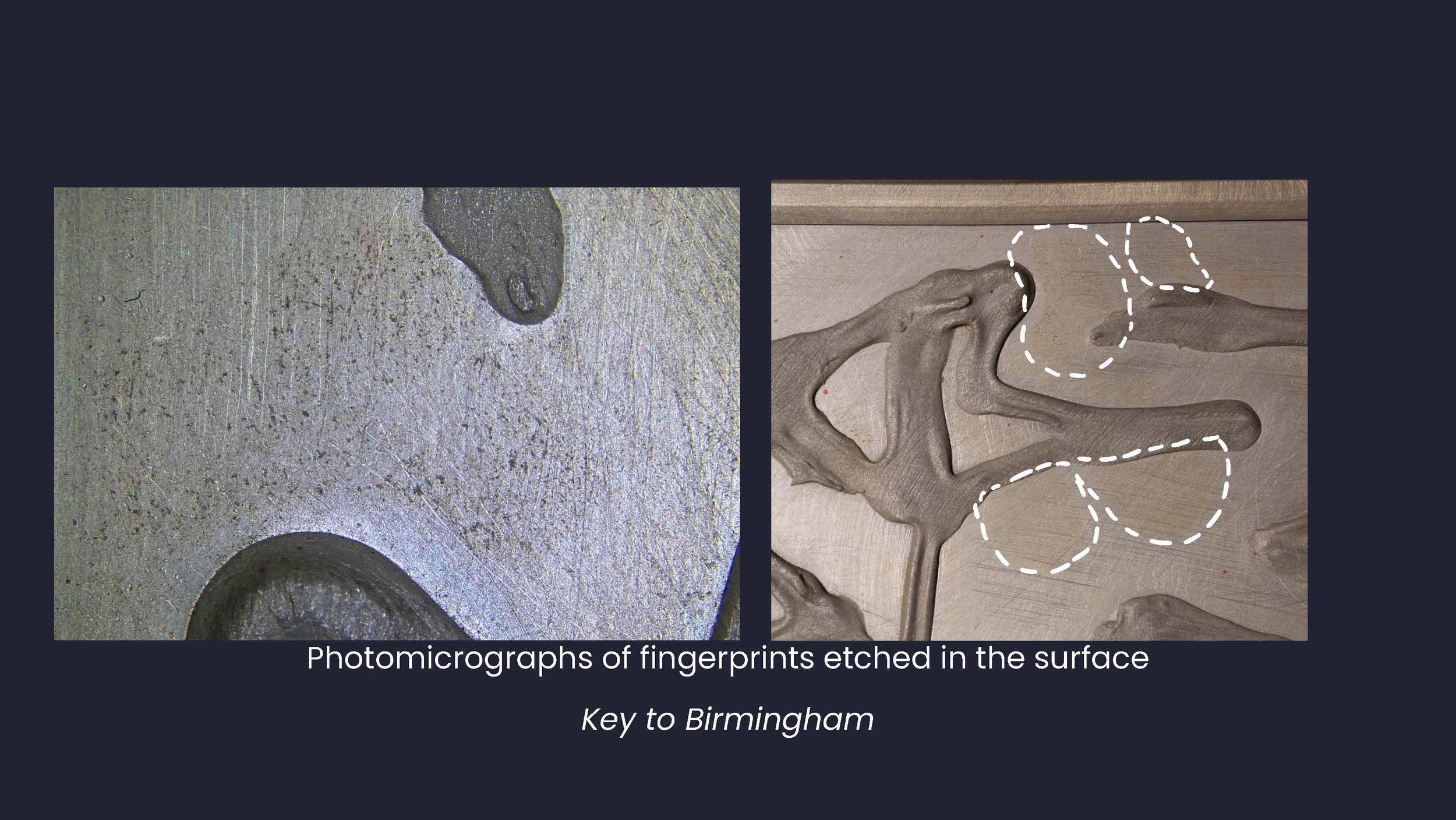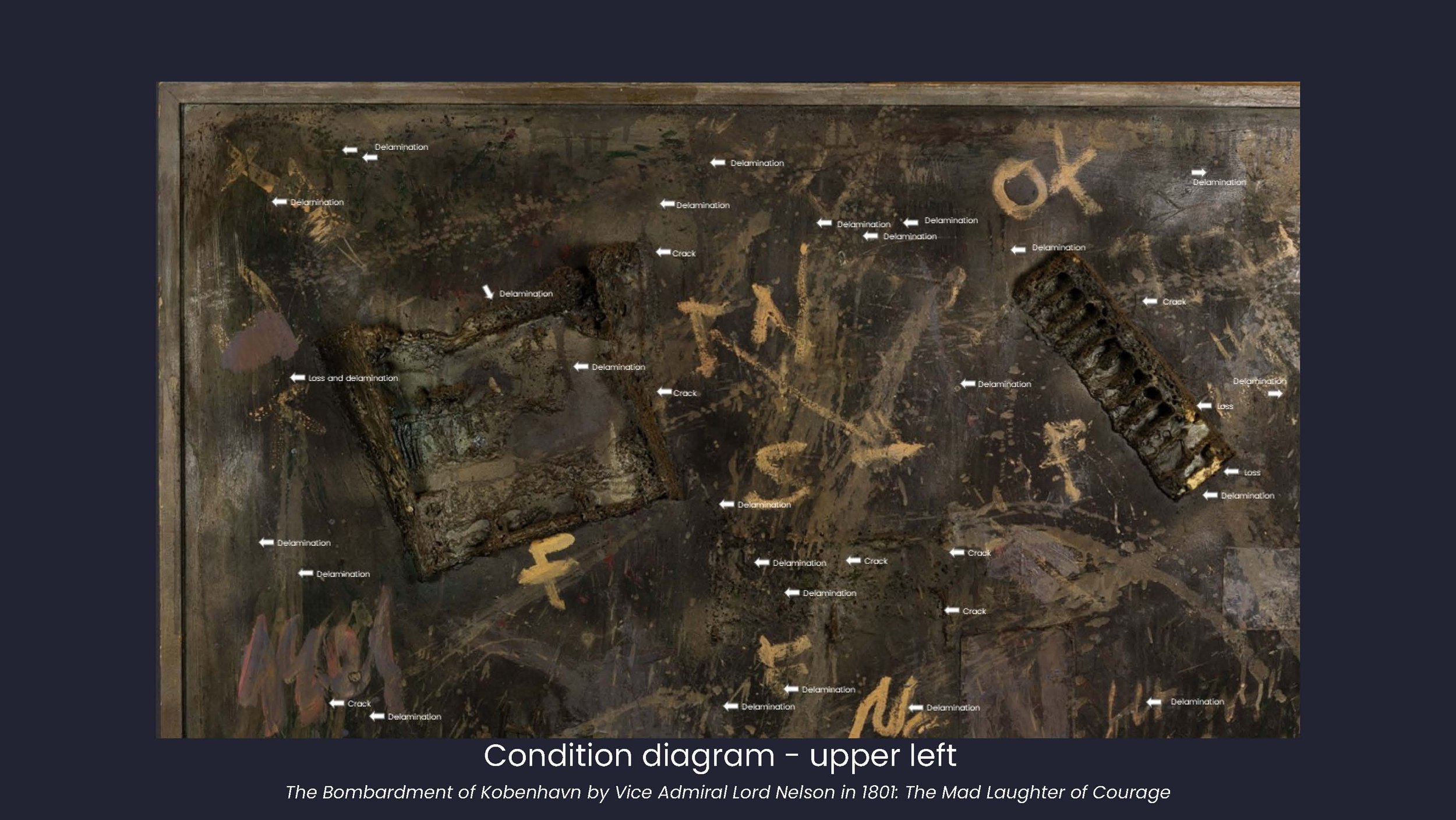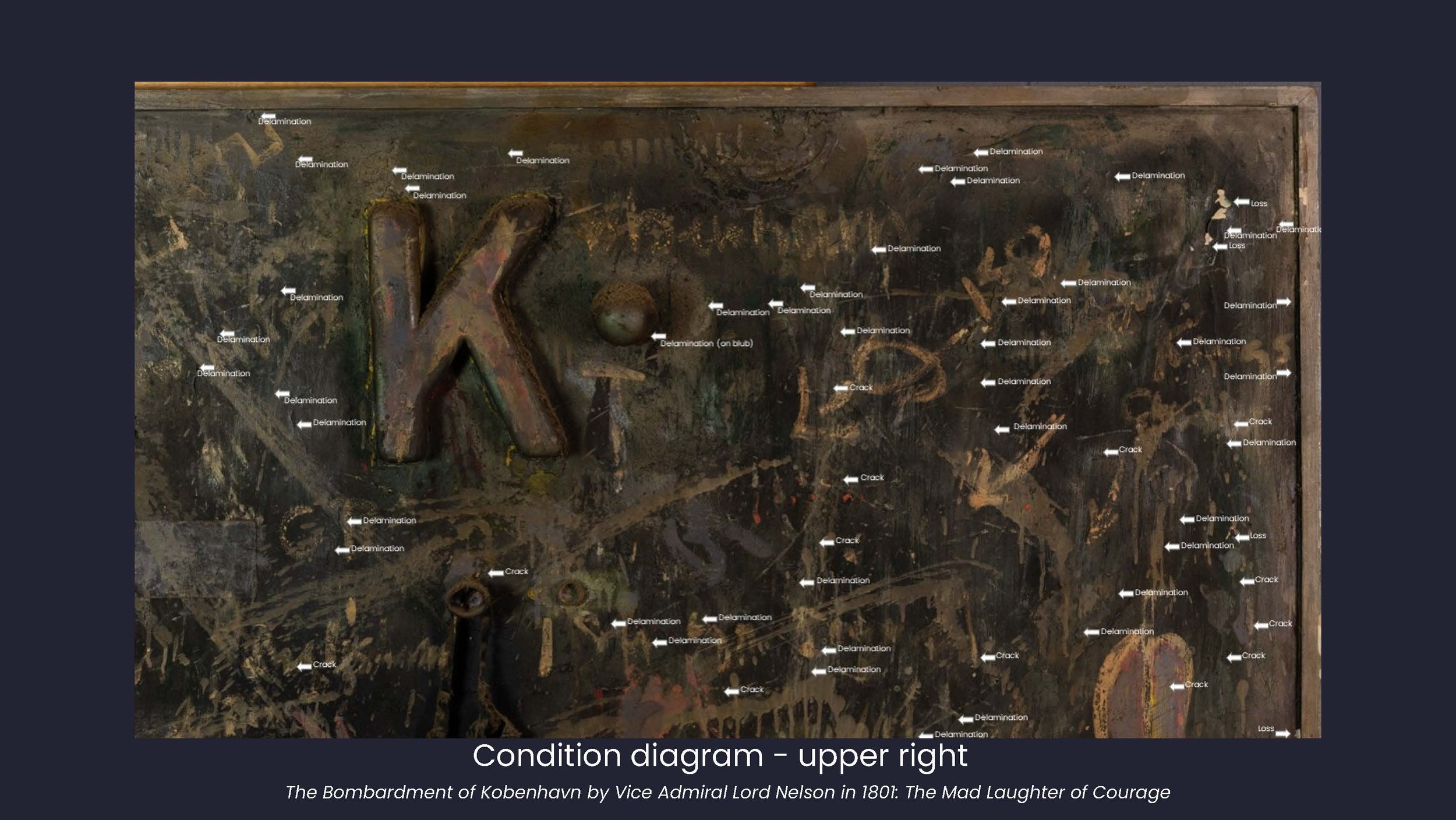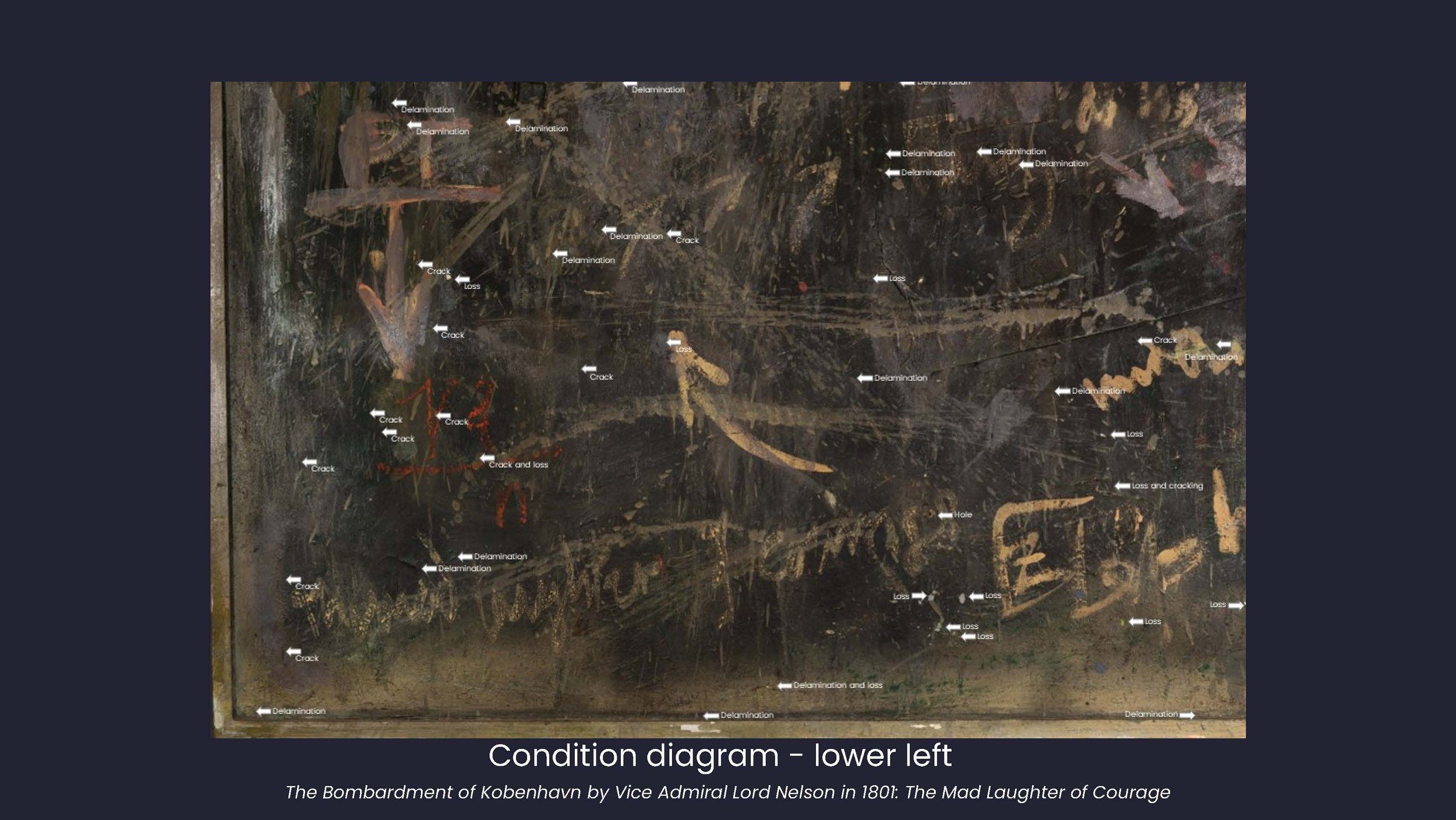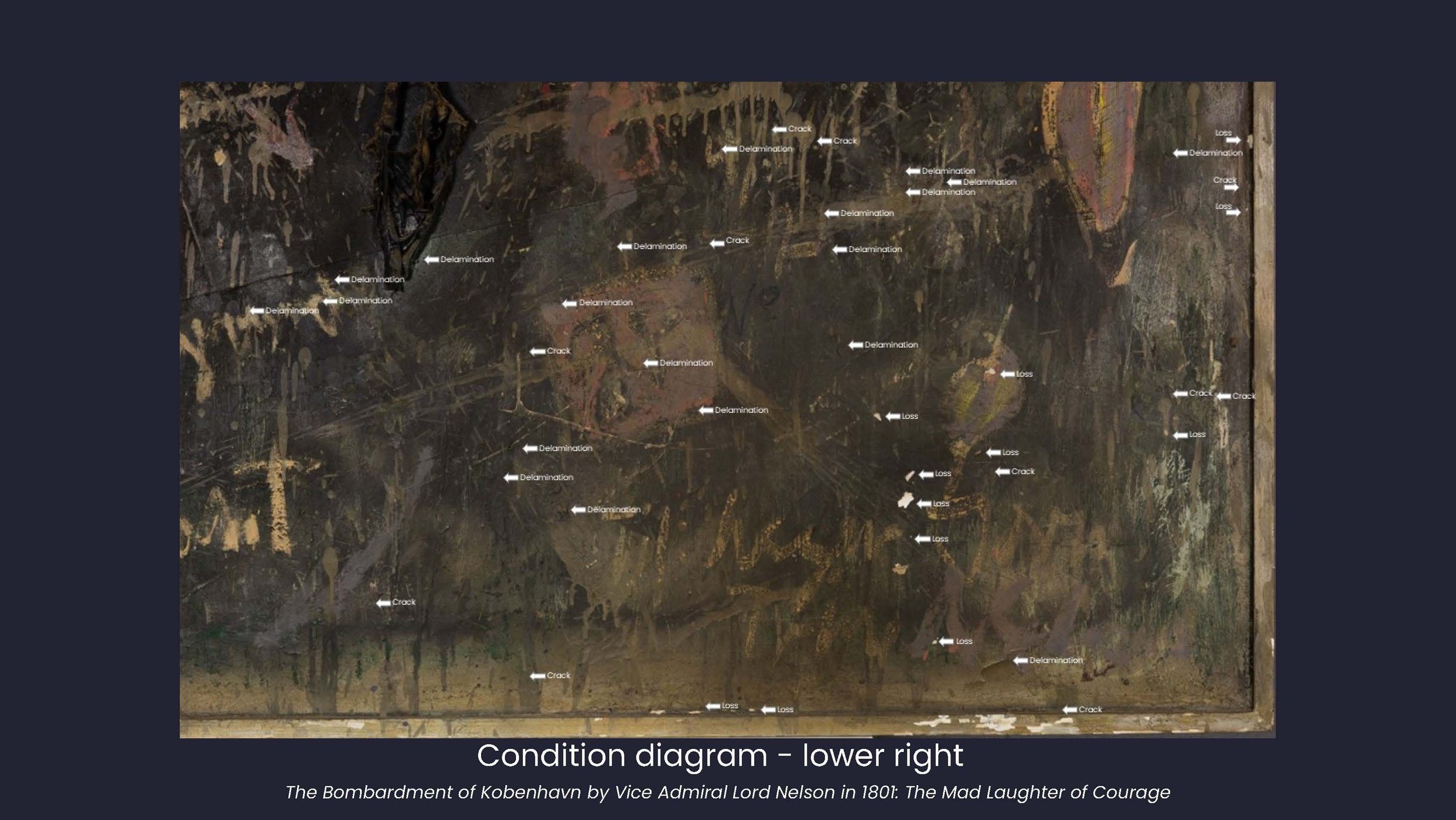The James E. Brewton Foundation: A Pre-Program Experience






The James E. Brewton Foundation was formed in 2008 by Emily Brewton Schilling, the daughter of the artist, with the mission of locating and properly storing the artworks and archival material of James Brewton. Since then, the Brewton Foundation has located more than 175 artworks and has sought out the assistance of Flux Art Conservation to examine and document the collection. The collaboration between Flux Art Conservation and the Brewton Foundation began in the summer of 2023 with 6 works by James E. Brewton spanning from 1962-1967. The goal of this project was to provide the Foundation with full documentation of the 6 works – including photography and written reports – along with acting as a pilot program for future pre-program conservation technicians such as myself. This blog post is a summary of that experience.
Photographic Documentation
The first steps taken in the assessment of the 6 Brewton Collection works was to conduct high-resolution digital photography of each piece, beginning with photos using normal, raking and specular illuminations. These lighting conditions are used to provide detailed visuals of the surface texture, sheen and any deformations. UV was completed next - which can be more accurately described as ultraviolet-induced visible fluorescence. This provides information about materials on the surface that may not be visible in normal lighting conditions, such as the presence of accretions, adhesives, coatings/varnishes and previous conservation work. The photographic documentation was able to provide me with necessary information to write the condition reports and better understand the materials and techniques used by James Brewton.
Examination and Written Documentation
At this stage is when close examination of the paintings and constructions occurred. I spent time with each work, studying the surfaces and taking notes that I would later use to write formal documentation. Examination was done with the naked eye as well as under magnification using a stereo microscope with up to 40x magnification. The use of a stereo microscope allowed me to see surface details better, such as fingerprints etched into the surface and microscopic losses and abrasions. Photomicrographs were taken of notable findings. This process allowed me to become familiar with the techniques and materials used by the artist and determine what the areas of concern were and which pieces required conservation.
Once I had completed visual examinations of each painting and construction, I wrote formal condition reports for all 6 objects. These reports included information on the structure, materials, and techniques, as well as current condition and preventive suggestions. Using the photographs, I was able to create condition maps of two paintings, X and The Bombardment of Kobenhavn by Vice Admiral Lord Nelson in 1801: The Mad Laughter of Courage. By identifying and locating current damages and areas of potential concern, condition maps can be used to visually understand the extent of the treatment needs and monitor ongoing condition changes.
Treatment
Examination of The Bombardment of Kobenhavn by Vice Admiral Lord Nelson in 1801: The Mad Laughter of Courage showed that it was in need of immediate conservation treatment, as can be seen in the condition map. When the painting had arrived in the studio it was coated in a thick layer of dust and grime from previous storage conditions, covering and obscuring the entire surface. Also visible under the dust were areas of active cracking and existing paint loss. A large concern with dry cleaning the painting was the amount of active delamination and cracking of the paint layer. However, after spending time closely examining the surface, I felt comfortable enough to work carefully around the areas of sensitive flaking. Once cleaning was completed, After Treatment photography was conducted, following the same guidelines as the Before Treatment photos. Strategies for addressing the active flaking were outlined in the condition report to support fundraising for future stabilization treatment.
Materials and Techniques
Through the examination and documentation of 6 works by James E. Brewton spanning from 1962-1967, I was able to find similarities in the materials and techniques used by the artist during that time. Beginning with Ubu’s Military Mind in 1962 and Key to Birmingham in 1964, Brewton was working with metallic paint and a thick metallic material that could possibly be an epoxy (analytical tests would be required to confirm) and mixed media. Examination under magnification found that there is intentional etching and working of the surface of both the sheet metal support and the metallic epoxy of both constructions. The two constructions are tied to historical events, Ubu’s Military Mind being tied to the artist's personal history as a USMC veteran and Key to Birmingham as a conversation about the Civil Rights movement and the events in Birmingham, Alabama in 1963.
In 1966 James Brewton completed X, An Egg Carton for the Wall, and Exhaust Steam. All these paintings were created with similar materials and techniques, most notably they are all paintings on canvas, a change from the previous constructions on sheet metal. These three artworks are canvas painted with metallic paint and attached foam elements, suspected to be packing materials; analytical tests are required to further characterize the material. These paintings continue the artist's use of mixed media, with X continuing the trend of adding personal materials to the painting (a newspaper clip with the title “J.E Brewton Museum of Comparative Vandalism”); this work also continues the artists technique of etching the surface, possibly with sandpaper. With these paintings from 1966 Brewton began using stencils to add letters and shapes to the paintings. (see image below)
The Bombardment of Kobenhavn by Vice Admiral Lord Nelson in 1801: The Mad Laughter of Courage, painted between 1966 and 1967, is considered by the artist and the Brewton Foundation to be his masterpiece, and is a culmination of materials and techniques seen in previous paintings and constructions. This construction is on a wood support with canvas on the back, painted with layers of dark paint, metallic paint, spray paint, and mixed media objects. Like the other examined works, this painting is also in a strip frame that was assembled by the artist. The mixed media objects comprise items both relating to the artist's personal history (a woman’s undergarments) and seemingly not (letters, lightbulb, and pieces of cloth), with metallic paint and foam structures.
Experience
This project done in collaboration with the Brewton Foundation has proven valuable to myself as a student actively applying for acceptance into a conservation graduate program. Through this opportunity, I have been able to practice many valuable skills during the process of working with the paintings and constructions from start to finish:
Photographic documentation, including UV
Written documentation and examination
Analysis of techniques and materials
Hands on experience with treatments as necessary
Critical thinking about collections care and preventative needs of artworks
Research and exploration of an artist’s evolution through materials and techniques
I have also been able to develop my skills in dry cleaning of sensitive surfaces, project organization and time management by estimating and tracking all hours spent on the project. Gaining and understanding of the relationships between a private conservation practice and a small artist’s foundation and nonprofit is knowledge that I will be able to take with me through my career as a conservator.
More about the James E. Brewton


